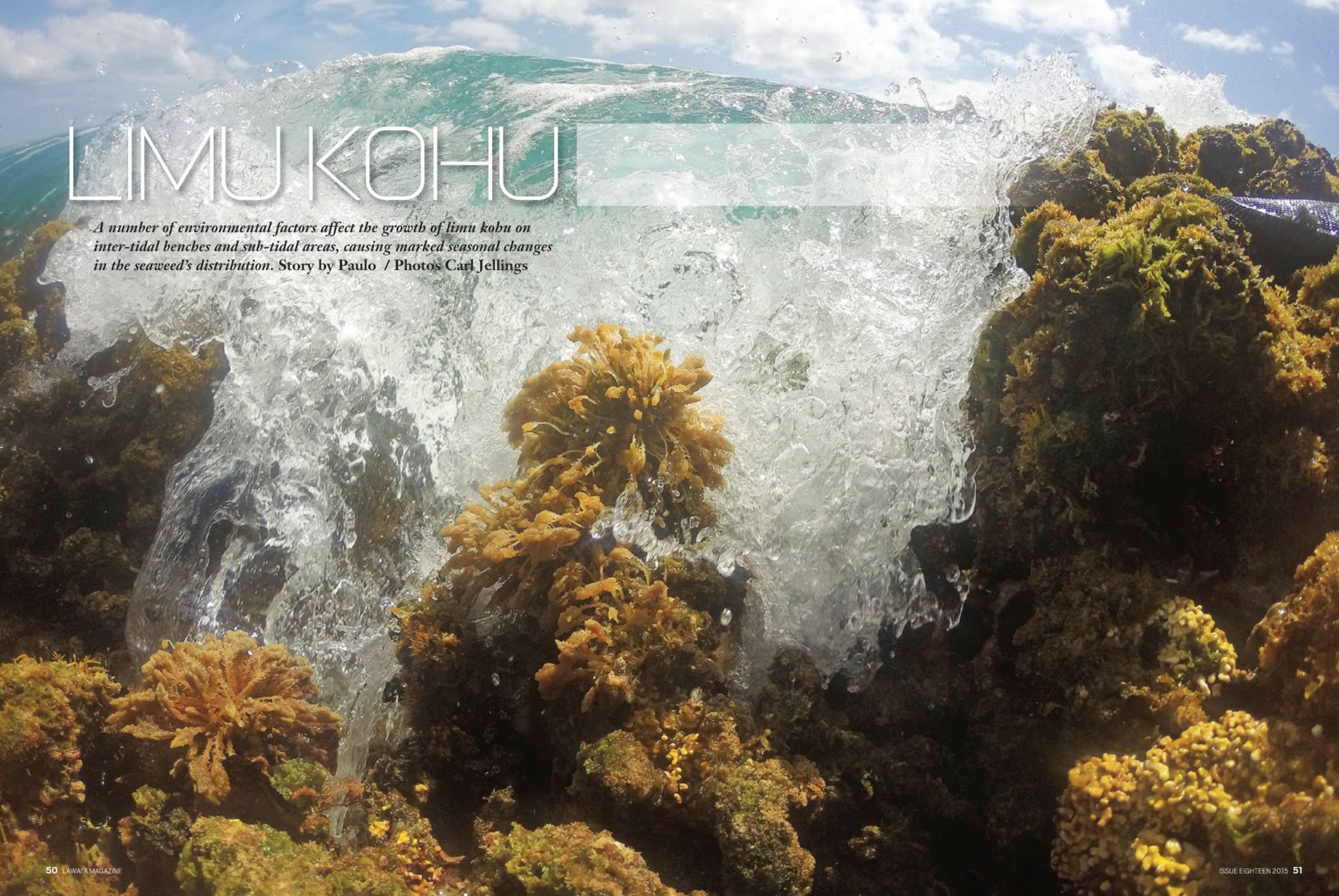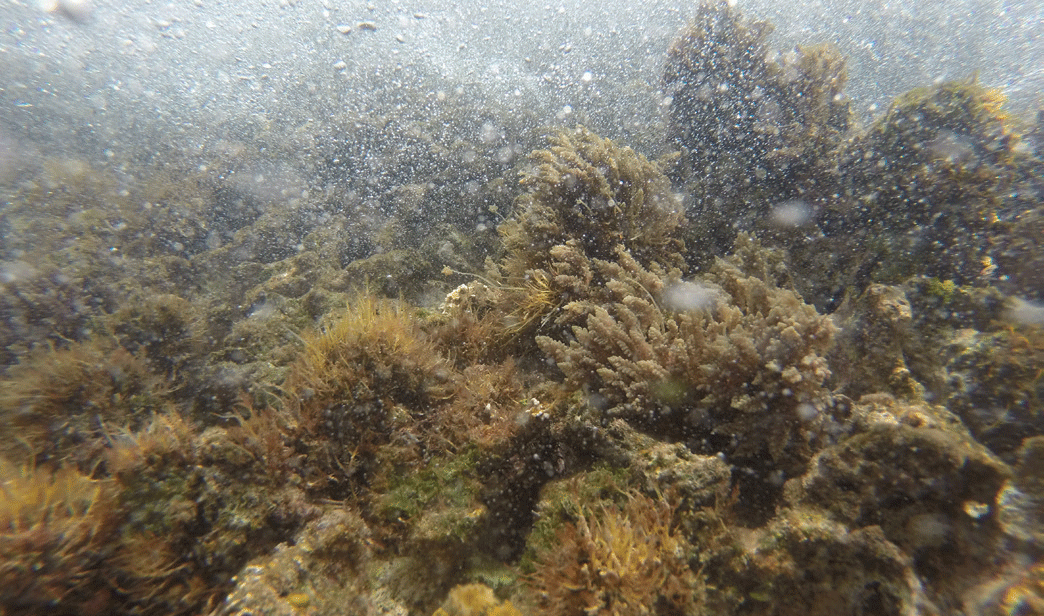Limu Kohu by Paulo, Issue #18 July 2015
Along coasts exposed to intense wave action generated by North Pacific swells and strong trade winds, during the wet season old seaweed is ground off by sand abrasion, opening surfaces for new seaweed growth. Under these conditions, limu kohu is able to attach and flourish on long stretches of papa (shallow rocky flats) that experience more water movement than during the dry season. The change of seasons from ho‘olio (wet) to ka‘u (dry) exposes growths of limu kohu on the intertidal benches to dehydration, sunburn and eventual death. Shallow-water plants bear spores after they have grown to a height of 3 inches and sporing continues until full growth of 5 inches in completed. As they grow taller, shallow water stands of limu kohu are torn off by high wave energy, starting with the fronds and eventually cutting off the main stems as they weaken. Reproductive spores probably attach successfully to particular sand grains. Grains too big may smother attached spores, whereas grains too small may not settle out on the bottom because of wave energy.
The ho‘olio (wet season) provides the best growing conditions on shallow (0-3 foot) benches, or papa. Marked changes in bench cover by this seaweed occurs during the wet season or after rainfall, with young stands of limu kohu growing as tall as 1-2 inches during one cycle of the moon.
During ka‘u (dry season), daylight exposure during minus tides, long days and reduced water movement make the shallow papa an inhospitable environment for limu kohu. Longer days, however, stimulate lush growths and sporing of this seaweed on subtidal areas of boulders and limestone flats to a depth of about 20 feet. At greater depths, growth is sparser because of limited sunlight. The continued availability of limu kohu depends on the recruitment and growth of new plants. Successes in reproducing (through sporing) and in attaching to local substrata are key processes that sustain the supply of this seaweed.
While collecting limu kohu, the plants can be rubbed against a rough surface (such as the collector’s bag) as they are harvested. Many spores are trapped within the plant mass and leaving this mass in the ocean increases the chances that spores will attach and grow near the original harvest location. Several Hawaiian legends reinforce the view that limu kohu is not only “supreme,” but especially the choice for ali‘i. It is the favorite limu of many Hawaiians. After harvest, it is soaked overnight to reduce the strong iodine odor before mixing with raw fish to make poke. Only a small quantity is needed because the flavor is penetrating. The peak demand for limu kohu occurs in the months of May and June, when high school graduation parties are held. At this time of the year, limu kohu growing on the shallow papa is destined to become sunburned and die with the changes of season (from wet to dry).
Ever Changing Conditions and Ecosystem
Until the early 1980s, Mo‘omomi Bay, Moloka‘i and nearby coastal waters were frequently turbid due to runoff from upland pineapple fields. Under these conditions, the dominant seaweed was limu lipoa, which grew so abundantly that wave action would break off limu lipoa, creating large accumulations along the shoreline. After pineapple production was phased out, coastal waters in and around Mo‘omomi Bay became much clearer and limu kohu became dominant. Limu lipoa is still present in the area, but its cousin species, limu alani, is more common.
The shift in dominance from limu lipoa to limu kohu had a marked effect on sand movement between Mo‘omomi and Kawa‘aloa bays. Sand that was once held fast at the bottoms of tidepools by limu lipoa now moves more freely because it is less anchored


